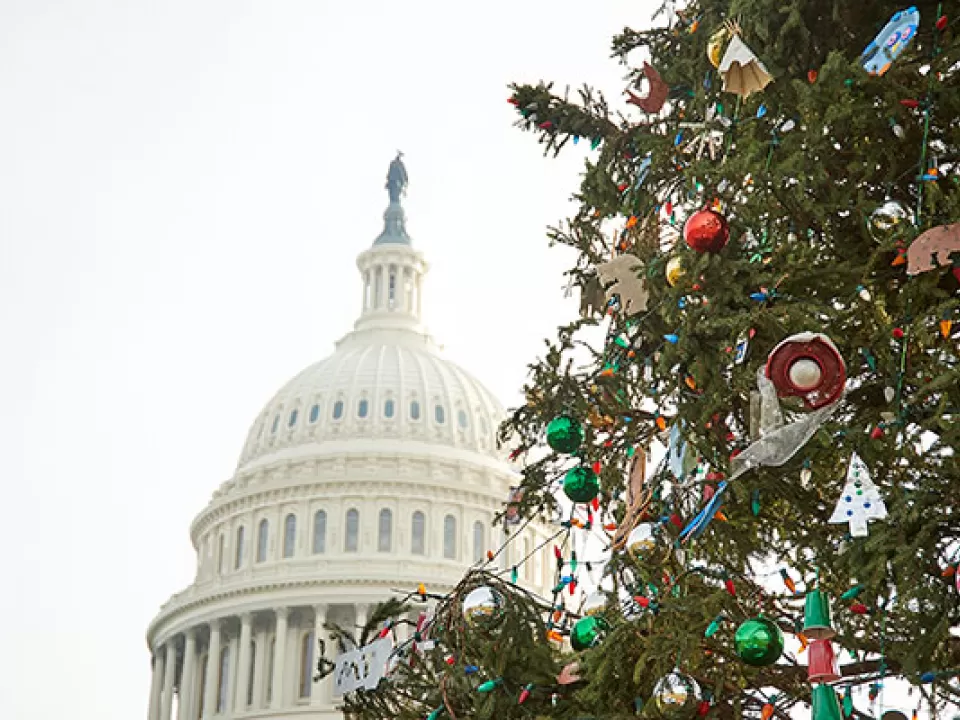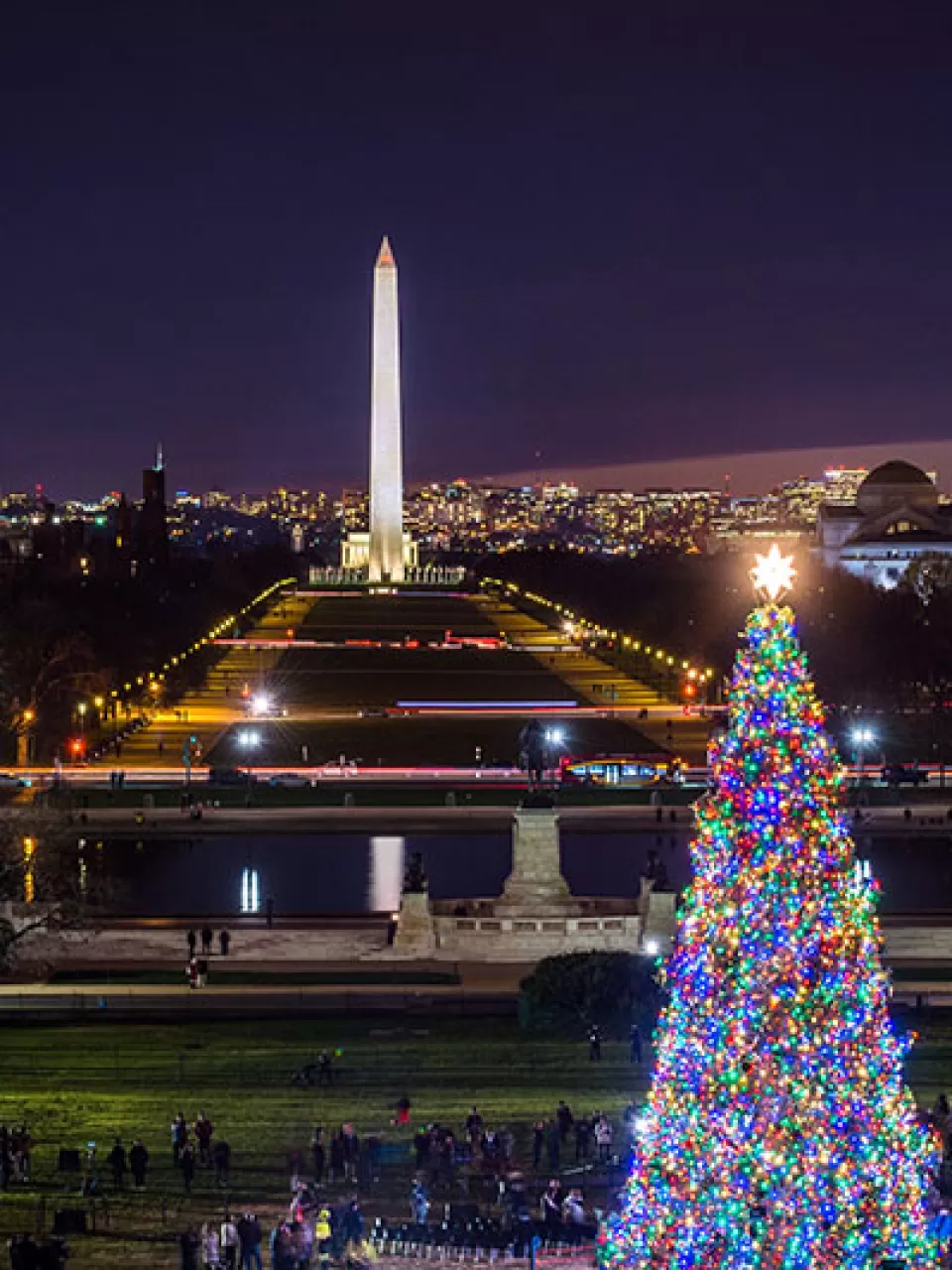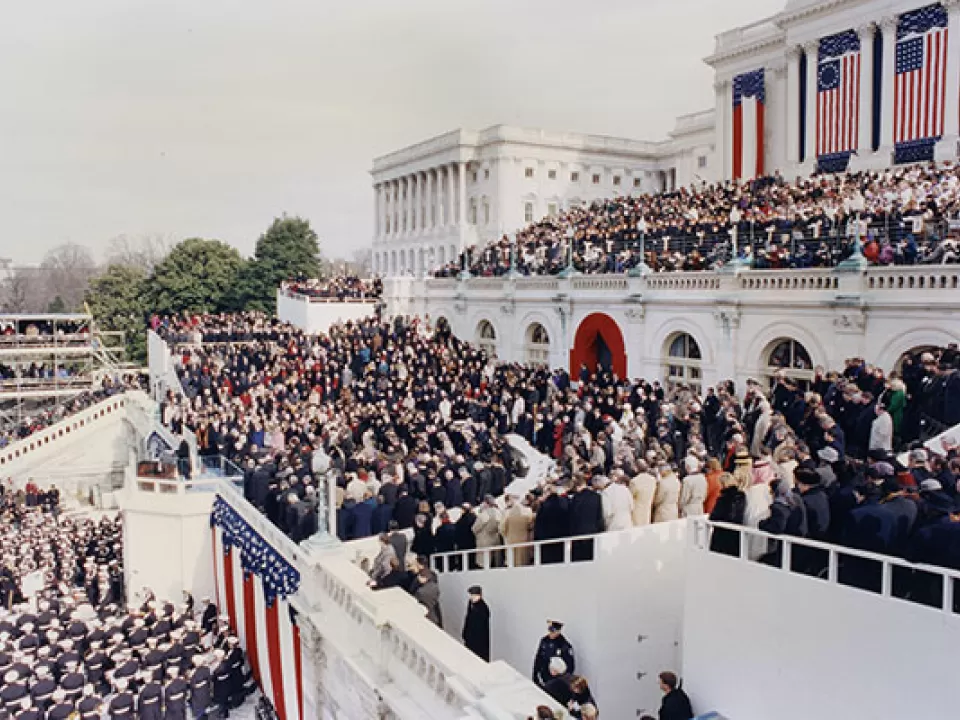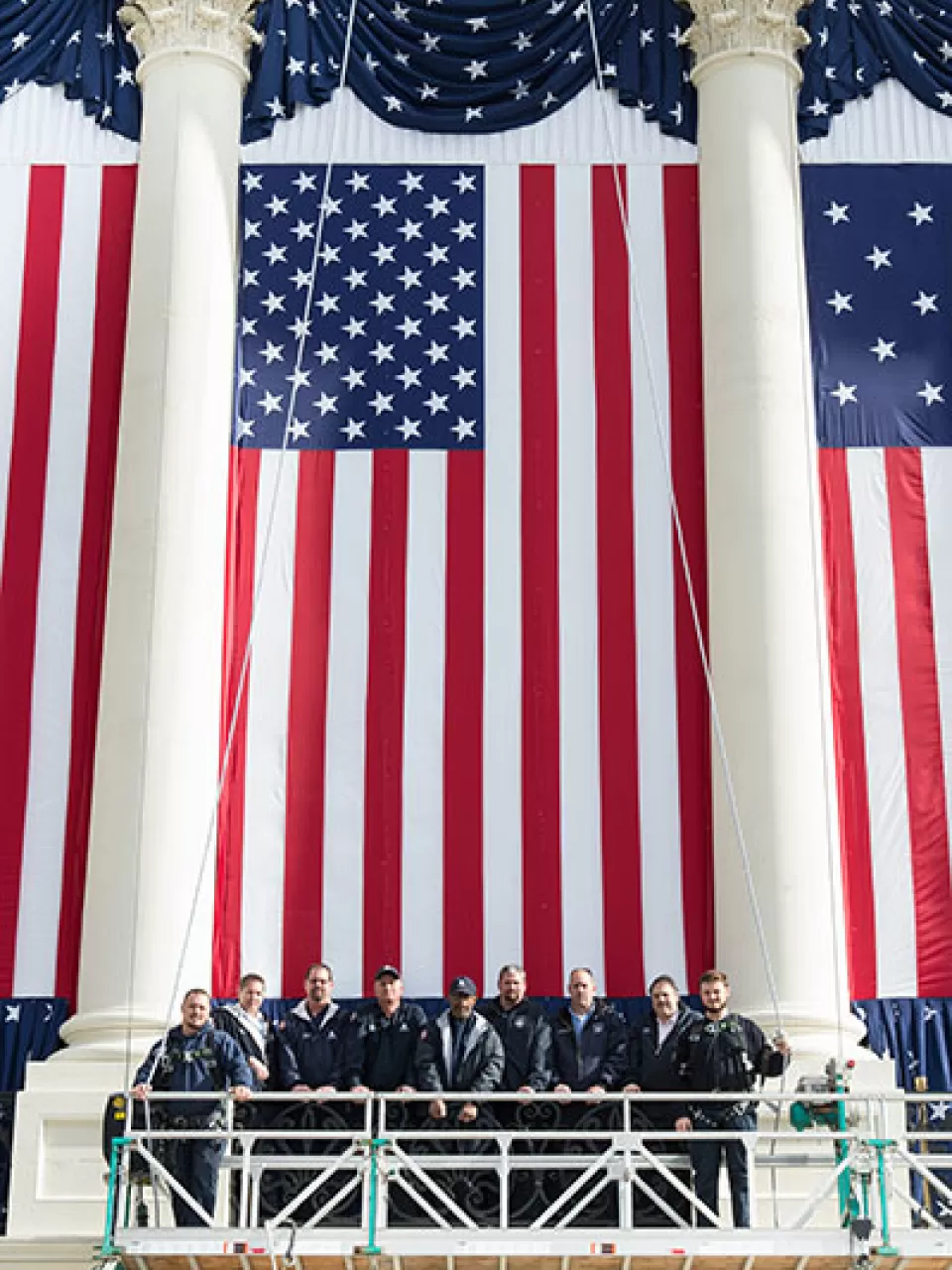Winter on the U.S. Capitol Grounds can be frigid, but there is still beauty to behold throughout the historic landscape. The season kicks off in the Christmas holiday spirit with good cheer and vibrant décor. As cold temperatures settle in, the graceful limbs of barren trees cleave the sky while occasional snowfall and ice blanket the grounds in glistening splendor.

What can visitors see and do in winter?
Trees and Blooms of Interest
Several species of trees — whether deciduous or evergreen — offer winter wonder for visitors to enjoy:
- Witch Hazel (Hamamelis virginiana) blooms in late winter.
- American Holly (Ilex opaca) features glossy green leaves and bright red fruits, which American Robins love to feast on.
- American Beach (Fagus grandifolia) has a smooth, light gray bark.
- Bur oak (Quercus macrocarpa) is deeply ridged with corky twigs. In fall, it features the largest acorn of any oak in North America.
- Old cherry trees on the West Front of the U.S. Capitol feature large, gnarly trunks.
- Giant Sequoia feature dense, coarse evergreen foliage.
- London Plane tree (Platanus x acerifolia) has a distinctive camouflage pattern with patches of green, cream and brown exfoliating bark.
Also, look for late winter blooms in the U.S. Capitol Grounds' perennial collection such as Hellebores, Forsythia and Camellias.
Season's Greenings Exhibit
This annual holiday show at the U.S. Botanic Garden opens on Thanksgiving Day and runs through New Year's Day. It features a collection of Washington, D.C., landmarks made from plant materials, a model train show, one of the largest indoor decorated trees in the area and a large display of poinsettia varieties.
Capitol Christmas Tree
An evening stroll on the Capitol grounds during Christmas time wouldn’t be complete without stopping to admire the shimmering lights and approximately 5,000 handmade ornaments covering the towering U.S. Capitol Christmas Tree.
Mounted on the West Front of the U.S. Capitol, the Architect of the Capitol (AOC) lights the tree every evening from early December through New Year's Day.
Sledding on Capitol Hill
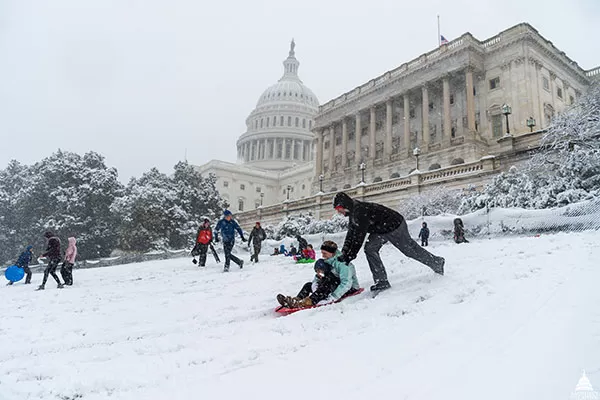
Occasionally, it snows enough that young and old alike look to Capitol Hill for sledding opportunities. At the discretion of the AOC, sometimes a section of the West Front of the Capitol grounds is opened to the public for sledding during daylight hours (dawn to dusk). When this happens, we provide tips to ensure safe, fun sledding that is also respectful of the historic nature of the Capitol grounds.
Presidential Inauguration
Every four years in January the United States government inaugurates a president. The Presidential Inauguration is a major undertaking and historic occasion that draws huge public crowds and global media attention.
The AOC erects the inaugural platform on the Capitol's West Front, sets up the necessary seating and fencing on the grounds, and coordinates other preparations with the Joint Congressional Committee on the Inaugural Ceremonies (JCCIC).
What does the AOC work on in winter?
While winter grips the U.S. Capitol Grounds, sending flora and fauna into dormancy and hibernation, hardy Capitol Grounds and Arboretum staff continue the difficult work of maintaining the grounds while also keeping them accessible and safe for congressional staff and visitors.
Tree Care
Trees are a major feature of the U.S. Capitol Grounds and continue to reflect Frederick Law Olmsted's original landscape design, a vision which drives all landscaping decisions on the grounds today. As "living witnesses to history," many of the trees on the grounds are gifted, memorial or commemorative trees that bear special plaques identifying their species and their historic significance.
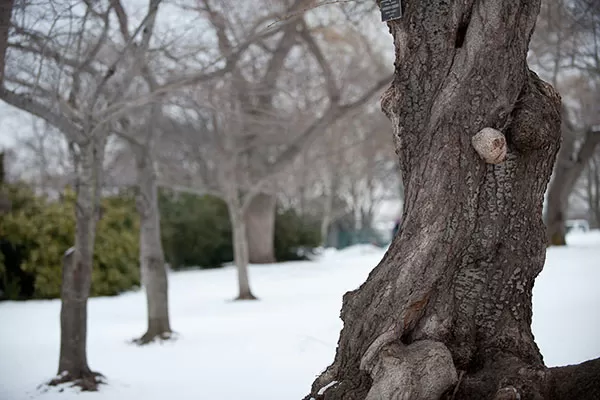
The AOC's arborists prune trees throughout the year for their health as well as for the safety of people and property below. Winter pruning offers a chance to prune for proper, healthy and strong tree structure. Additionally, winter pruning is often preferred for some species for a number of reasons including reduced likelihood of pathogenic infestation to pruning activities.
Mulching Trees and Shrub Beds
Plenty of mulching is performed by Capitol Grounds and Arboretum crews in winter, especially around newly planted trees and shrubs. Among its important duties, mulch insulates the soil to provide a buffer from extreme temperatures; retains water to keep roots moist; prevents soil compaction; and keeps weeds out to help prevent root competition.
Snow Plowing and Salting
When winter storms bring snow and ice, grounds crews mobilize to tackle an arduous task: clearing — and keeping clear — about 18.5 miles of sidewalks, 8.5 miles of streets and drives, and more than 20 acres of parking lots and plazas.
Throughout the course of any storm, the AOC coordinates and shares information with the U.S. Capitol Police as well as the District Department of Transportation. Five hundred tons of rock salt and 20 tons of deicer are on hand to spread on roads, sidewalks and steps before winter storms strike.
About the U.S. Capitol Grounds
The U.S. Capitol Grounds are comprised of approximately 286 acres, including the U.S. Capitol, Senate and House office buildings, the Capitol Power Plant and Union Square. The Capitol Grounds and Arboretum jurisdiction of the AOC is responsible for both the day-to-day maintenance of the U.S. Capitol Grounds and the preservation of a significant historic landscape and accredited arboretum originally designed by Frederick Law Olmsted. In addition, every aspect of caring for the Capitol campus follows rigorous environmentally sustainable practices.
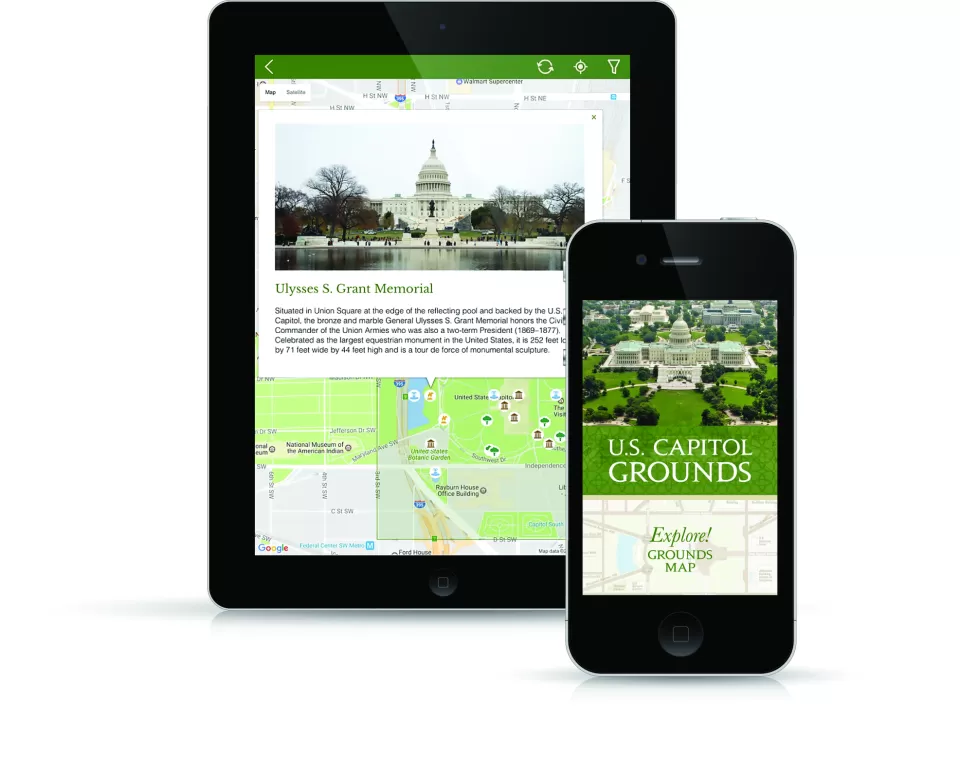
For an easy and on-the-go reference to all that the U.S. Capitol Grounds have to offer, download the Capitol Grounds app to your phone. Explore the interactive map, photos, audio clips, historic details and more. Visit the Apple Store or Google Play to download the app today!
